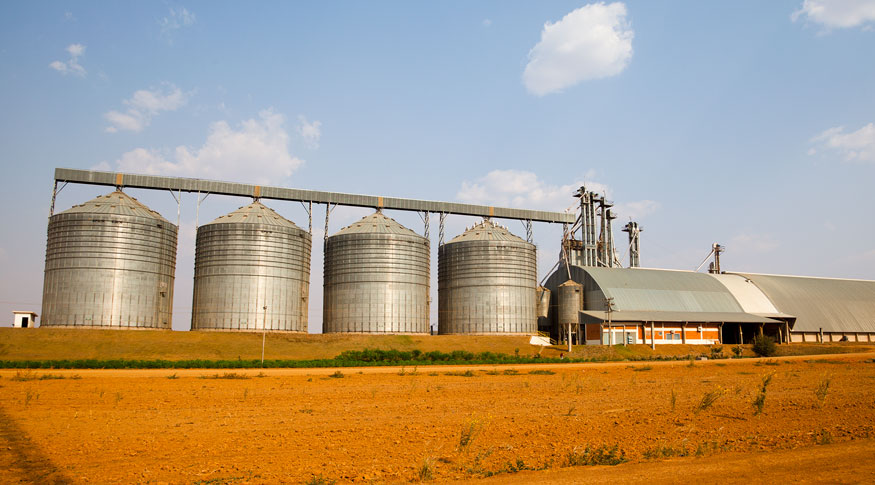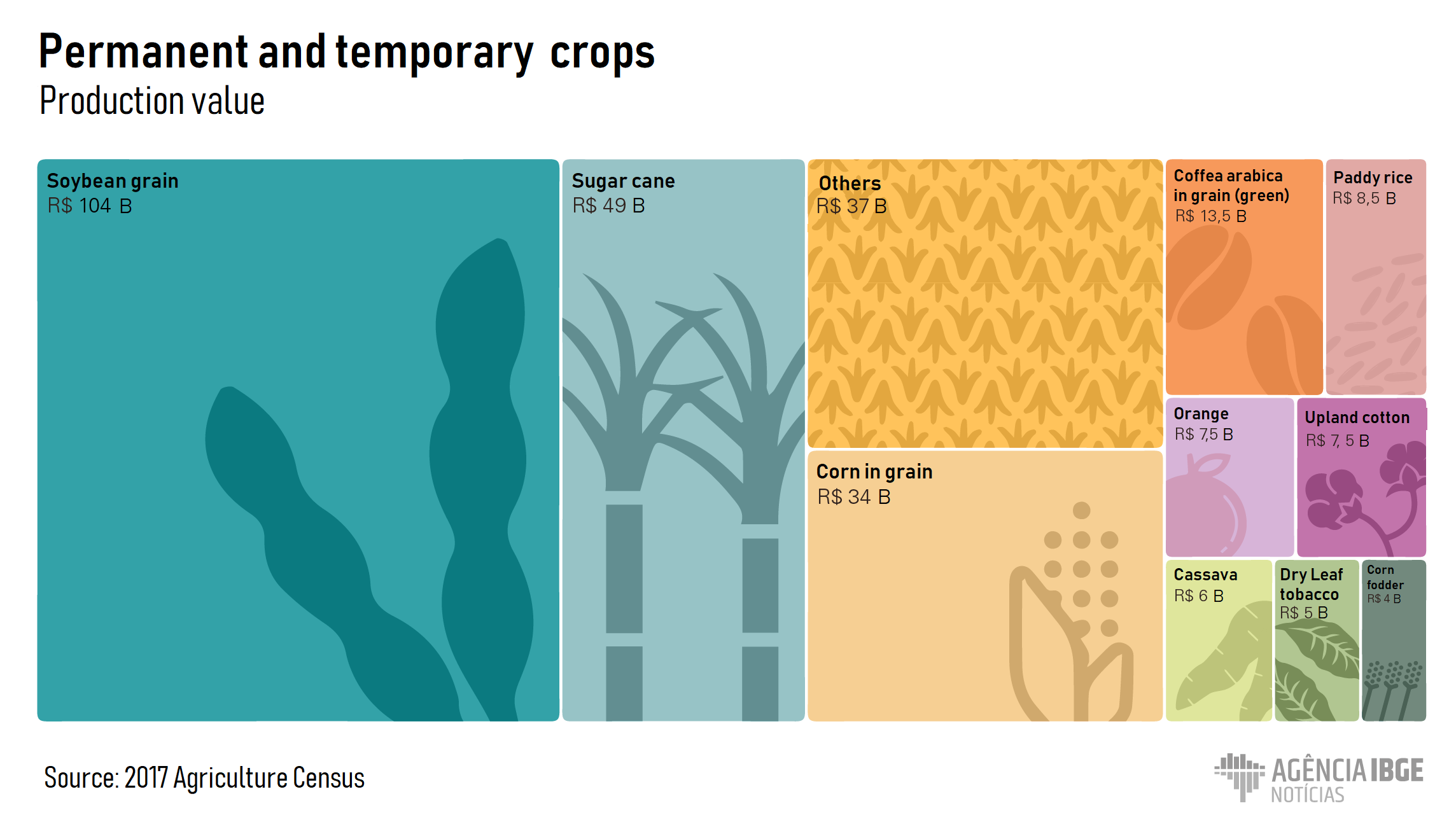Census of Agriculture 2017
Soybeans lead production value with R$104 bi
November 14, 2019 03h00 PM | Last Updated: November 26, 2019 09h12 AM

Soybean, sugar cane and corn are the crops that have the biggest impact on Brazil's economy. According to the latest edition of the Census of Agriculture, the value of the country's vegetable production in 2017 was R$308 billion; soybeans, which occupies the top of the list, is responsible for the contribution of R$104 billion - more than one third of the total vegetable production in the country.
Secondly, sugarcane contributed with R$49 billion, followed by corn in grain with R$34 billion and coffea arabica with R$13.5 billion. Rice, with R$8.6 billion, also boosted production value, rising from the seventh to the fifth position between 2006 and 2017.

The rise in soybean production can be clearly seen when compared to the 2006 Census of Agriculture. The harvested area increased by 72%, the number of establishments increased by 9% and the amount produced increased by 123%. As a result, soybean took the lead in the production value for the first time in a census of agriculture, beating sugarcane, traditionally the champion of production value.
Brazil is today the second largest soybean producer in the world. According to 2018 data from the Brazilian Agricultural Research Corporation (Embrapa), most of the soybeans produced in Brazil are destined for export, either as bran, oil or, mainly, grain, generating U$40.9 billion in value.
IBGE's Agricultural Coordinator, Mr. Octávio Oliveira, explains that one of the factors that contributed to boosting production was the increased demand for chickens, pigs and hogs and eggs. "As both soybeans and corn are fundamental for animal feed, therefore, we have a higher demand for those grains," he explained.
Mr. Oliveira also comments that, despite losing space for soybeans, sugarcane has remained stable, as its demand is still high. Among other factors is the versatility of the product, which serves as the raw material for biofuel, sugar for export and ethanol that is added to gasoline.


















